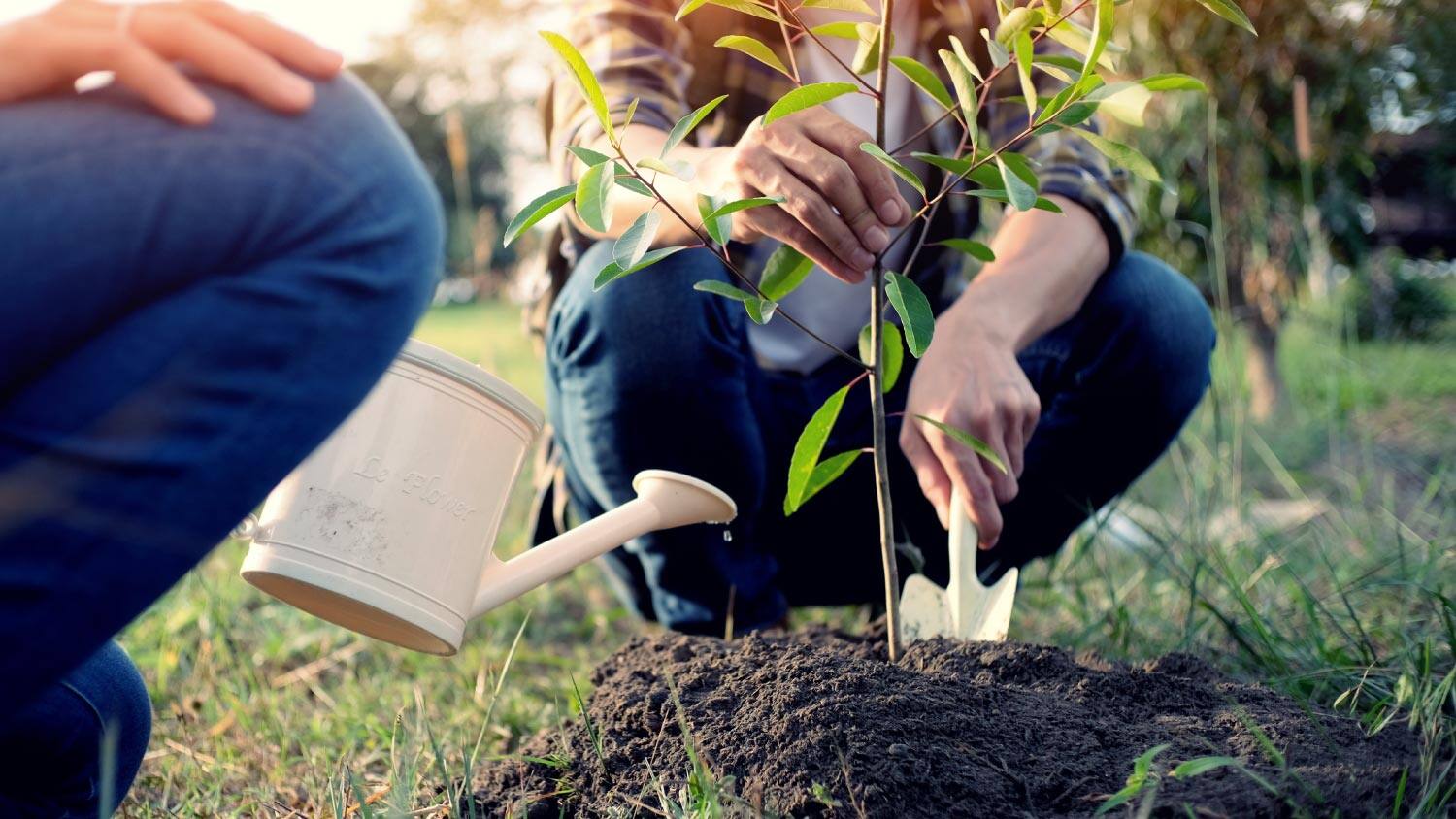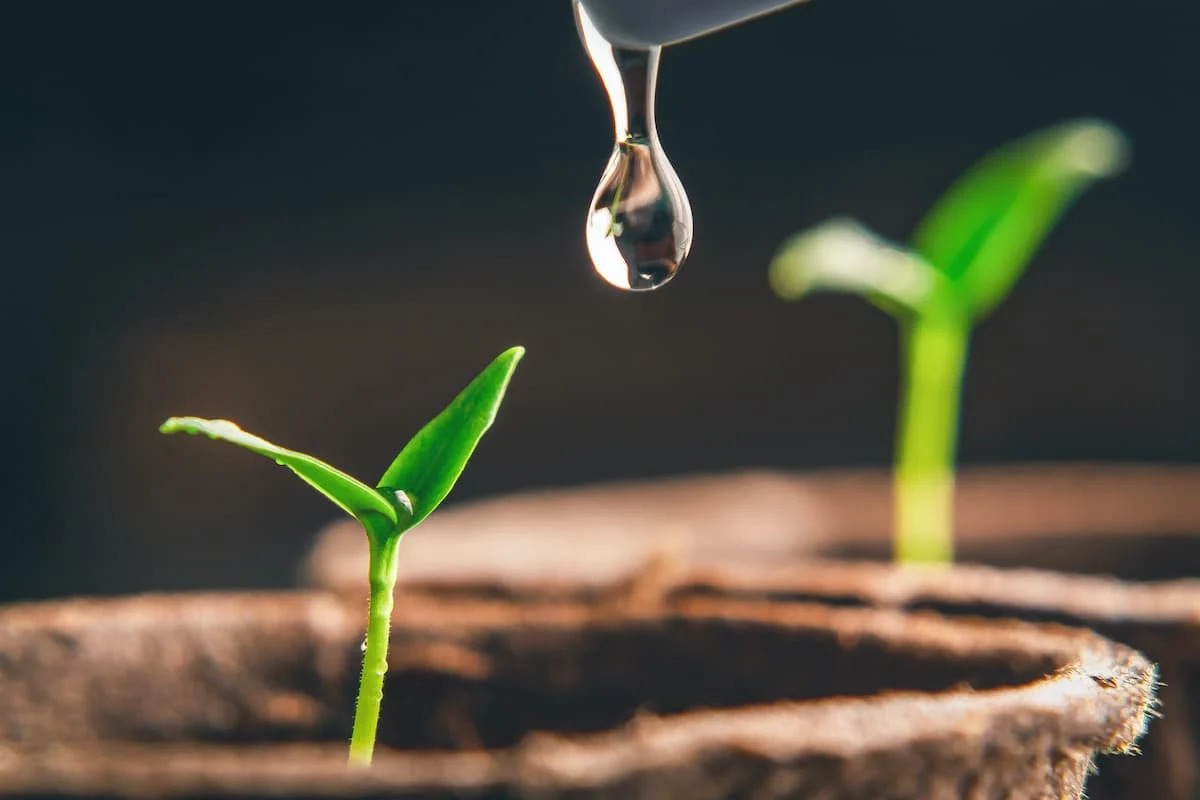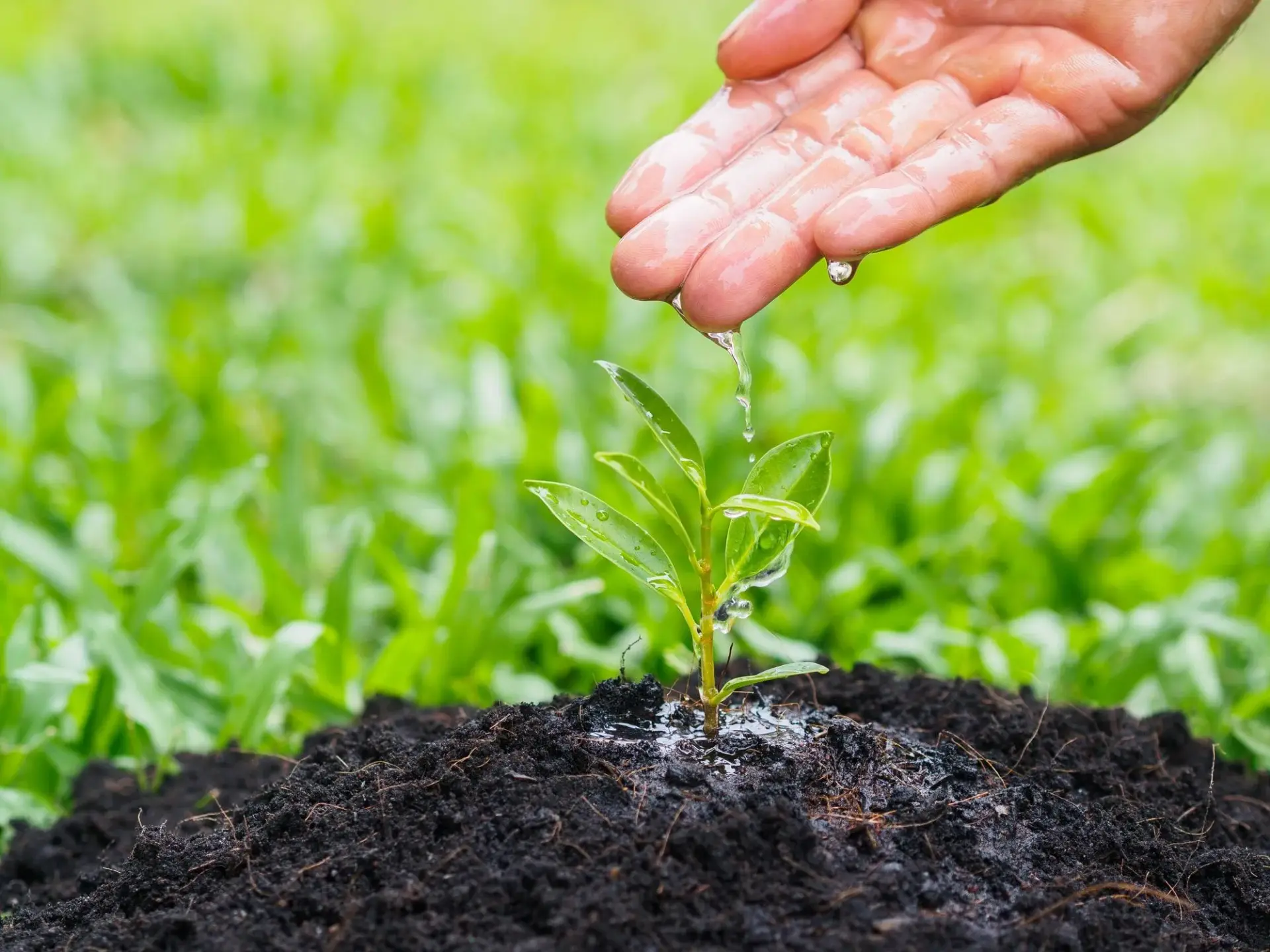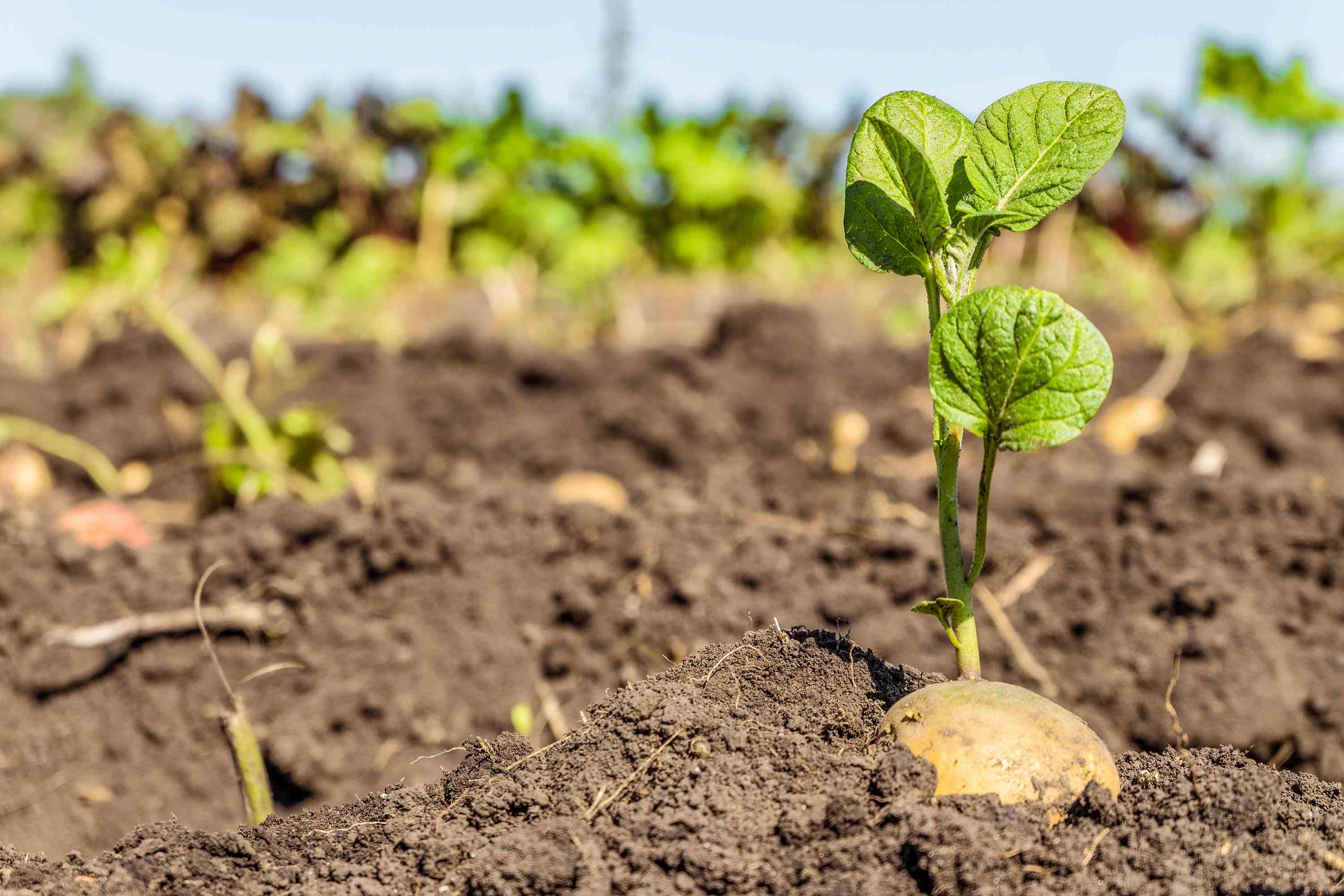Home>Gardening Techniques>Plant Care>How Often Do You Water Newly Planted Shrubs


Plant Care
How Often Do You Water Newly Planted Shrubs
Modified: February 6, 2024
Proper plant care is essential for newly planted shrubs. Learn how often to water them for optimal growth and health.
(Many of the links in this article redirect to a specific reviewed product. Your purchase of these products through affiliate links helps to generate commission for Chicagolandgardening.com, at no extra cost. Learn more)
Table of Contents
- Introduction
- Factors to Consider Before Watering Newly Planted Shrubs
- Signs of Thirst in Newly Planted Shrubs
- How Often to Water Newly Planted Shrubs
- Proper Watering Techniques for Newly Planted Shrubs
- Importance of Mulching for Newly Planted Shrubs
- Common Mistakes to Avoid When Watering Newly Planted Shrubs
- Conclusion
Introduction
Welcome to the world of plant care! Whether you are a seasoned gardener or just starting out, understanding the proper watering techniques for newly planted shrubs is essential for their health and success. Proper watering not only helps establish healthy root systems but also promotes robust growth and beautiful foliage.
When it comes to watering newly planted shrubs, there are several factors to consider. The type of shrub, soil conditions, climate, and time of year all play a significant role in determining how often and how much water your shrubs need. Neglecting proper watering can result in stressed, wilted, or even dead shrubs, so it’s crucial to understand the signs of thirst and the best watering practices.
In this article, we will explore the key factors to consider before watering newly planted shrubs, the signs of thirst your shrubs may exhibit, how often to water them, and the proper techniques to ensure optimal hydration. We will also discuss the importance of mulching and highlight common watering mistakes to avoid.
By the end of this article, you will have a clear understanding of how to care for your newly planted shrubs and give them the best start in their new environment. So, let’s dive in and unlock the secrets to successful shrub watering!
Factors to Consider Before Watering Newly Planted Shrubs
Before reaching for the watering can, it’s important to consider a few key factors that can affect the watering needs of your newly planted shrubs. By understanding these factors, you can ensure that you are providing the right amount of water at the right time.
Shrub Type: Different types of shrubs have different water requirements. Some shrubs, such as hydrangeas, prefer moist soil at all times, while others, like cacti, thrive in drier conditions. Research the specific watering needs of the shrubs you have planted to ensure they receive the appropriate amount of water.
Soil Conditions: The type and quality of soil in your garden can influence how quickly water is absorbed and retained. Sandy soil tends to drain quickly, requiring more frequent watering, while clay soil retains moisture for longer periods. Consider the soil composition and adjust your watering schedule accordingly.
Climate: The climate in your area can greatly impact the watering needs of your shrubs. Hot and dry climates may require more frequent watering, while cooler and more humid climates may necessitate less frequent watering. Be mindful of the local climate and adjust your watering schedule accordingly.
Time of Year: As the seasons change, so do the watering needs of your shrubs. During periods of vigorous growth, such as spring, shrubs may need more water to support their development. In contrast, during dormant periods, such as winter, shrubs require less water. Adapt your watering schedule based on the time of year to ensure optimal hydration.
Plant Age: The age of your newly planted shrubs can affect their water requirements. Young shrubs with underdeveloped root systems may require more frequent watering to aid in root establishment. As the roots grow deeper and become more established, the watering frequency can be gradually reduced. Pay attention to the age of your shrubs and adjust your watering accordingly.
By taking these factors into consideration, you can tailor your watering strategy to meet the specific needs of your newly planted shrubs. Understanding these variables will help ensure that your shrubs receive the right amount of water, promoting their overall health and vitality.
Signs of Thirst in Newly Planted Shrubs
Just like humans, plants have their own ways of communicating their needs. Recognizing the signs of thirst in your newly planted shrubs is crucial for providing them with the necessary hydration. By being attentive to these signs, you can prevent your shrubs from dehydration and promote their overall well-being.
Wilting: One of the most common signs of thirsty shrubs is wilting. When plants lack sufficient water, their leaves and stems may appear droopy or wilted. However, it’s important to note that wilting can also be caused by other factors, such as excessive heat or pest infestation. Therefore, it’s essential to check the soil moisture level before assuming that wilting is solely due to dehydration.
Dry Soil: By checking the moisture level in the soil around your shrubs, you can determine if they are in need of water. Insert your finger into the soil about two inches deep. If it feels dry at that depth, it’s a strong indication that your shrubs need watering. However, if the soil feels moist, hold off on watering as overwatering can be just as damaging as underwatering.
Yellowing Leaves: When shrubs don’t receive enough water, their leaves may start to turn yellow or brown. This is because water is essential for transporting nutrients throughout the plant. If you notice discoloration or browning of the leaves, especially at the edges or tips, it may be a sign that your shrubs are thirsty.
Stunted Growth: Insufficient water can hinder the growth of your newly planted shrubs. If you find that your shrubs are not showing any signs of growth or that their growth seems slower than expected, inadequate water supply may be the culprit. Providing the proper amount of water will help stimulate healthy growth and development.
Leaf Drop: In extreme cases of dehydration, shrubs may shed their leaves as a survival mechanism. If your shrubs are losing an excessive amount of leaves, it’s a sign that they are under stress and in desperate need of water. Immediate action should be taken to restore hydration and prevent further damage.
Being able to recognize these signs of thirst in your newly planted shrubs allows you to respond promptly and provide them with the hydration they require. Regular monitoring and timely watering will help keep your shrubs healthy and thriving.
How Often to Water Newly Planted Shrubs
The frequency of watering newly planted shrubs depends on several factors, including the type of shrub, soil conditions, climate, and time of year. While there isn’t a one-size-fits-all answer, understanding these factors will help you determine the appropriate watering schedule for your shrubs.
The general rule of thumb for watering newly planted shrubs is to provide deep, thorough watering once or twice a week. This encourages the roots to grow deeper into the soil and develop a strong foundation. However, it’s essential to adapt this guideline based on the specific needs of your shrubs and the conditions they are in.
Start by checking the moisture level in the soil. Insert your finger into the soil about two inches deep. If it feels dry at that depth, it’s time to water. On the other hand, if the soil feels moist, hold off on watering to prevent overwatering, which can lead to root rot and other problems.
During hot and dry periods, you may need to increase the frequency of watering to prevent your shrubs from becoming stressed. Monitor the soil moisture and adjust your watering schedule accordingly. Remember, it’s better to water deeply and less frequently than to water shallowly and frequently, as deep watering encourages the roots to search for moisture and promotes overall plant health.
As the seasons change, so should your watering schedule. During periods of active growth, such as spring and summer, your shrubs may require more frequent watering to support their development. In contrast, during dormant periods, such as fall and winter, you can reduce the watering frequency to accommodate for the slower growth rate.
In addition to frequency, it’s important to consider the amount of water your shrubs need. Aim to provide enough water to thoroughly wet the root zone, which is typically the top 12-18 inches of soil. This will ensure that the water reaches the roots and encourages deeper root growth.
Remember, these guidelines are just starting points. It’s important to closely observe your newly planted shrubs and make adjustments based on their specific needs. By providing the right amount of water at appropriate intervals, you will help your shrubs establish a strong root system and flourish in their new environment.
Proper Watering Techniques for Newly Planted Shrubs
Proper watering techniques are essential for ensuring the health and vitality of your newly planted shrubs. By following these guidelines, you can effectively hydrate your shrubs and support their growth and development.
Water at the Base: When watering your shrubs, it’s important to direct the water at the base of the plant rather than sprinkling it from above. This helps ensure that the water reaches the roots and is absorbed efficiently.
Use a Soaker Hose or Drip Irrigation: Consider using a soaker hose or drip irrigation system to provide a slow, steady flow of water directly to the root zone. This method helps minimize water waste and allows for deep penetration into the soil.
Water Slowly and Deeply: Avoid watering too quickly or with excessive force, as this can lead to runoff and shallow root development. Instead, water slowly and deeply to encourage the roots to grow deeper into the soil. This also helps prevent the soil from becoming compacted.
Maintain Moisture Balance: It’s important to strike a balance between keeping the soil moist and avoiding overwatering. Aim to water your shrubs enough to thoroughly wet the root zone, but be cautious not to saturate the soil. Constantly soggy conditions can lead to root rot and other issues.
Water in the Morning: Watering your shrubs in the morning allows the foliage and soil to dry out during the day, reducing the risk of disease. Watering in the evening can promote prolonged moisture on the leaves, which can encourage fungal growth.
Mulch After Watering: Apply a layer of organic mulch, such as wood chips or bark, around the base of your shrubs after watering. Mulching helps retain soil moisture, prevents weed growth, and regulates soil temperature. Be sure to leave a gap between the mulch and the trunk to prevent moisture buildup against the bark.
Monitor and Adjust: Regularly monitor the moisture level of the soil and adjust your watering schedule as needed. Factors such as rainfall, temperature, and season can affect the watering needs of your shrubs. Stay vigilant and make necessary adjustments to ensure your shrubs receive adequate hydration.
By following these proper watering techniques, you can provide your newly planted shrubs with the care they need to thrive. Remember to tailor your watering approach to the specific needs of your shrubs, always mindful of the soil conditions, climate, and other factors that can influence their watering requirements.
Importance of Mulching for Newly Planted Shrubs
Mulching is a crucial step in the care of newly planted shrubs. The application of a layer of organic mulch around the base of your shrubs offers numerous benefits that contribute to their overall health and well-being.
Conserves Moisture: One of the primary advantages of mulching is its ability to retain moisture in the soil. Mulch acts as a barrier, reducing water evaporation from the soil surface. By keeping the moisture level more consistent, mulch helps to prevent drying out and minimizes the need for frequent watering.
Regulates Soil Temperature: Mulch acts as insulation for the soil, protecting the roots of your newly planted shrubs from extreme temperatures. During hot summer days, mulch provides a cooling effect by shading the soil and reducing heat absorption. In colder weather, it helps to maintain a more stable soil temperature by insulating the roots against freezing temperatures.
Controls Weed Growth: A layer of mulch serves as a natural weed barrier, reducing the competition for nutrients and water between weeds and your shrubs. This saves you time and effort in weed management, as it suppresses the growth of unwanted plants and minimizes the need for frequent weeding.
Prevents Soil Erosion: Mulching helps to control soil erosion, which can occur from heavy rainfall or water runoff. The layer of mulch acts as a protective cover, preventing soil particles from being washed away. This is especially important for newly planted shrubs with shallow root systems, as it helps stabilize the soil and protects their fragile roots.
Improves Soil Fertility: As mulch breaks down over time, it enriches the soil with organic matter. This decomposition process adds nutrients to the soil, promoting healthy microbial activity and improving overall soil fertility. The enhanced nutrient availability benefits the growth and development of your newly planted shrubs.
Enhances Aesthetic Appeal: In addition to its functional benefits, mulch also provides an aesthetic element to your garden. It gives a polished, finished look to the landscape and creates a neat appearance around your shrubs. Mulch comes in a range of colors and textures, allowing you to customize your garden’s visual appeal.
When applying mulch, it’s essential to follow proper techniques. Ensure that the mulch is spread evenly around the base of the shrub, forming a layer of about 2-4 inches in depth. Be careful to leave a slight gap between the mulch and the trunk to prevent moisture buildup against the bark.
By understanding the importance of mulching and implementing it as part of your shrub care routine, you provide your newly planted shrubs with a stable and nurturing environment. The benefits of mulching extend beyond aesthetics, promoting healthy growth, conserving moisture, and protecting against environmental stressors.
Common Mistakes to Avoid When Watering Newly Planted Shrubs
Watering newly planted shrubs may seem simple, but there are several common mistakes that can hinder their growth and health. By being aware of these pitfalls, you can avoid them and ensure that your shrubs receive the proper care they need.
Overwatering: One of the most common mistakes is overwatering newly planted shrubs. Excessive water can lead to waterlogged soil and root rot, depriving the plants of oxygen. It’s important to strike a balance between keeping the soil moist and avoiding saturation. Check the soil moisture level regularly and only water when necessary.
Watering Shallowly: Watering shallowly does not encourage deep root growth. It’s crucial to water slowly and deeply to ensure that the water reaches the root zone. By providing thorough watering, the roots are encouraged to grow deeper into the soil, promoting a stronger and more resilient plant.
Watering During the Wrong Time of Day: Timing is crucial when it comes to watering shrubs. Avoid watering during the hottest part of the day, as much of the water will evaporate before the plants have a chance to absorb it. Instead, water in the early morning when the temperature is cooler, allowing the water to be taken up more effectively by the roots.
Ignoring Soil Conditions: Different soil types have different water-holding capacities. Ignoring the soil conditions can lead to improper watering. Sandy soil drains quickly, requiring more frequent watering, while clay soil retains moisture for longer periods. Understanding your soil composition and adjusting your watering schedule accordingly is essential.
Neglecting Mulching: Mulching is not only aesthetically pleasing, but it also plays a vital role in retaining soil moisture and preventing weeds. Neglecting to mulch around your newly planted shrubs can result in moisture loss through evaporation and increased weed competition for nutrients and water. Apply a layer of organic mulch around the base of your shrubs to reap the benefits.
Not Observing Individual Plant Needs: Each shrub species has its own unique watering requirements. Some shrubs prefer drier soil, while others thrive in moist conditions. It’s important to research and understand the specific needs of the shrubs you have planted. By observing and accommodating each plant’s needs, you can ensure proper hydration and optimal growth.
Watering Too Close to the Trunk: Lastly, avoid watering directly on the trunk of the shrub. This can cause excessive moisture against the bark, increasing the risk of disease and rot. Instead, focus the water on the root zone, a few inches away from the base of the plant.
By avoiding these common mistakes, you can provide your newly planted shrubs with the care they need to thrive. Take the time to understand their individual needs, create a proper watering routine, and adjust accordingly. Your shrubs will reward you with healthy growth, vibrant foliage, and a beautiful addition to your garden.
Conclusion
Caring for newly planted shrubs requires attention to detail and a good understanding of their watering needs. By considering factors such as shrub type, soil conditions, climate, and time of year, you can develop a watering routine that promotes healthy growth and vitality. It’s important to recognize the signs of thirst in your shrubs, such as wilting, dry soil, yellowing leaves, stunted growth, and leaf drop, and respond promptly with proper watering.
Understanding how often to water newly planted shrubs is essential. Deep, thorough watering once or twice a week is generally recommended, but this can vary depending on specific needs and environmental factors. Remember to water at the base of the shrubs, using a soaker hose or drip irrigation for efficient water delivery. Monitor the moisture level in the soil, adjust the watering frequency based on the time of year, and aim for deep watering to encourage strong root development.
Proper watering techniques, such as watering slowly and deeply, watering in the morning, and mulching after watering, play a significant role in supporting the health of your newly planted shrubs. Avoid common mistakes like overwatering, watering shallowly, and neglecting mulching to ensure optimal plant growth and prevent issues like root rot and weed competition.
By taking the time to understand and meet the unique watering needs of your newly planted shrubs, you can provide them with the best possible care. Consistent monitoring, adjustments as needed, and a deep understanding of the factors that influence watering requirements will help your shrubs establish strong root systems, thrive in their environment, and bring beauty and vitality to your garden for years to come.










